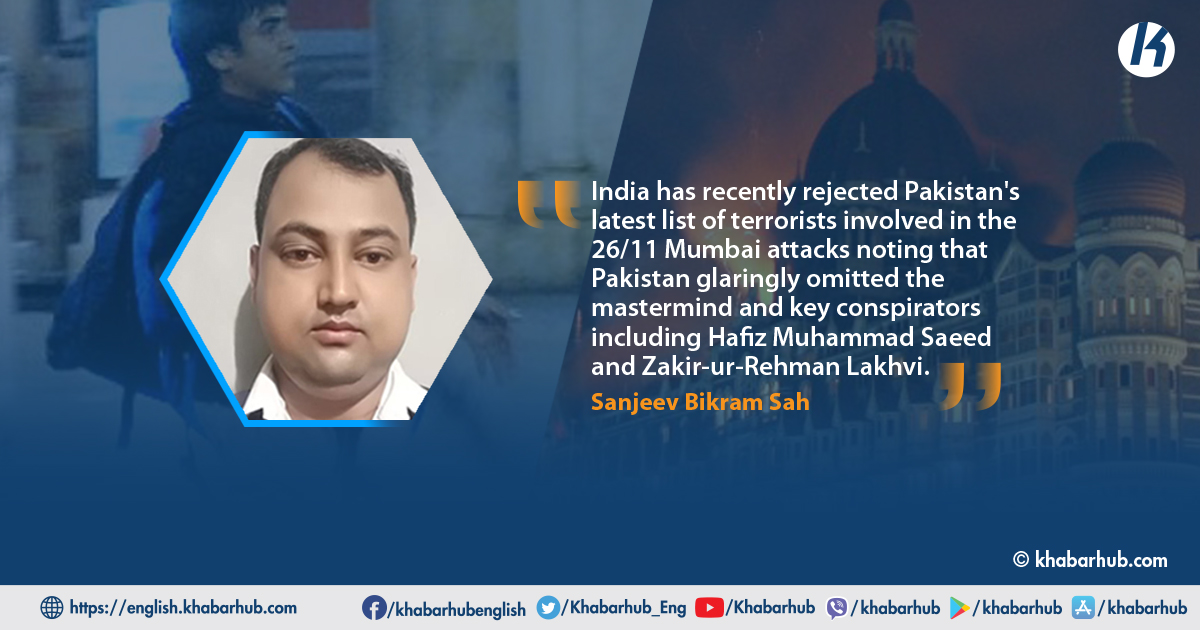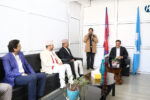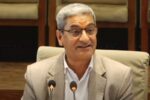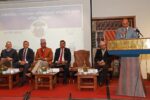On the night of 26 November 2008, as many as 10 Kalashnikov-wielding terrorists attacked India’s financial city of Mumbai. The terrorists struck simultaneously at five locations, shooting dead as many as 140 Indians and 25 foreign tourists.
American and British passport-holders were also executed in two luxury hotel complexes. At a Jewish cultural center, Israeli nationals were tortured and then killed. A fourth location, a café frequented by Western backpackers, was also enfiladed with automatic fires.
Following the Mumbai attack, suspicion swiftly focused on Lashkar-e-Taiba (LeT), a Pakistan-based jihadist group.
Although “banned” by the Pakistani government since 2002, the LeT held ostentatious fund-raising rallies and also operated urban recruitment centers without any interference from the government.
It, in fact, had pioneered the concept of suicidal mass-casualty assaults in South Asia, reportedly upon the advice of a former Pakistani Army SWAT operator, as per reports.
However, unlike previous LeT assaults on India, those of ’26/11 were different in two respects.
First, the 26/11 attack targeted Western nationals and Indian civilians. This ensured that there would be greater global interest in ascertaining the perpetrators’ real identities than with previous attacks that targeted Indian citizens.
All that was necessary to de-link Islamabad from the attack was to ensure that the attackers would fight to the death. Controlling the gunmen via telephone was possibly intended to bolster their morale in this regard.
Second, during previous raids, the LeT gunmen stormed a single location. However, one of the attackers, unfamiliar with the topography, was unable to barricade himself on time.
Policemen then swarmed him while he was trying to flee the scene, losing one of their colleagues. The arrest of this gunman, named Ajmal Kasab, was a game-changer. For the first time, India captured a terrorist in a suicidal attack with high interrogation value.
Kasab was then interrogated by Prashant Marde, an officer of the Mumbai police. He (Kasab) confirmed that there were nine other shooters in Mumbai, saying all were Pakistani nationals.
Meanwhile, aware of the international ramifications of these revelations, India permitted the American Federal Bureau of Investigation to interrogate Kasab directly.
A team of FBI officials came to Mumbai from New York to learn what they could about the deadly attack.
Kasab independently confirmed to the FBI what he had told the Indian police. He said he was a Pakistani citizen and a member of LeT, and that the attack was being “directed in real-time from the Pakistani port city of Karachi via mobile and internet telephony,” according to newspaper reports.
This digital trail connecting the terrorist in Mumbai with controllers in Karachi then proved crucial.
Simultaneously, the Western intelligence officials in Islamabad met with the head of analysis at Pakistan’s Inter-Services Intelligence (ISI).
According to Steve Coll, a double Pulitzer Prize-winning journalist who closely examined Pakistani links with terrorism in his book Directorate S, the ISI official was confronted with intercepts of serving agency operatives directing the gunmen in Mumbai.
The official Pakistani response in the following days was a bundle of contradictions. At the diplomatic level, Islamabad initially promised to cooperate in the post-attack investigation. It, however, insisted that any link to Pakistani territory was unproven.
There has long been suspicion that elements within the agency had engineered a massacre by Sindhi extremists in the city of Hyderabad on 30 September 1988.
At the local level, attempts were also made to erase the evidentiary trail leading to Pakistan.
This response drew criticism from former Pakistani Prime Minister Nawaz Sharif. Nearly ten years later, Sharif, meanwhile, observed that Pakistan’s failure to deliver justice for the Mumbai victims had eroded its credibility globally.
In June 2001, a Pakistani magazine “Newsline” ran a report in which a wing of the ISI, known as the Security or ‘S’ Wing, was alleged of instigating domestic terrorism.
The report further suggested that during the democratic interlude of 1988-99, when civilian prime ministers ruled the country, the “army-officered ISI had used Islamist proxies to discredit them”.
There has long been suspicion that elements within the agency had engineered a massacre by Sindhi extremists in the city of Hyderabad on 30 September 1988.
As many as 250 people were gunned down in just 15 minutes, mostly from the minority Muhajir community (descendants of refugees who emigrated from India in 1947).
The next day in Karachi, Muhajirs retaliated against innocent Sindhis, fracturing the efforts of politicians to form a united front against the military regime then in power in Pak.
Throughout the following decade, rumors persisted that the ISI supported several breakaway factions within mainstream political parties, providing them with firearms.
These reports were at times endorsed by officials from other security agencies within Pakistan.
There is a similarity between the 1988 Hyderabad massacre in Pakistan, and the Mumbai attack two decades later.
In both cases, roving teams of shooters mowed down civilians in public places. And, interestingly, in both cases, the perpetrators escaped conviction.
The suspected mastermind of the Hyderabad massacre, a Sindhi politician called Qadir Magsi, was acquitted in 2017.

Likewise, the main suspect in the Mumbai attacks, LeT military chief Zaki ur Rehman Lakhvi, was bailed in 2014 after a court case in which the prosecutors and at least one judge even received death threats.
After 9/11, some international scrutiny had come to be focused on ISI’s support for militant groups. In 2006, aware of mounting suspicion, the agency also created a counter-terrorism cell to liaise with the Western counterparts.
American scholar Stephen Tankel suggested that ‘S’ Wing operated at cross-purposes with the new cell called ISI-CT: was technically the directorate responsible for counterterrorism efforts in Pakistan.
Since it was formed at the behest of the United States and a CIA-funded organization, the ICI-CT was perceived within the Pakistani security establishment as an “externally sponsored orphan”.
In reality, ISI-CT has a limited mandate that clashes with the service’s more powerful External Security Wing (ISI-S) –responsible for directing intelligence and security operations outside Pakistan.
As long as the victims of cross-border terrorism in South Asia were Afghans and Indian nationals, Western governments did not seem to focus on this specific form of terrorism.
The unexpected capture of Ajmal Kasab by the Mumbai police during the night of 26 November 2008 robbed the plan of its key asset — deniability. Kasab provided details of the training process that the gunmen had gone through in Pakistan.
This changed, however, after the US and its NATO allies invaded Afghanistan. A 2009 New York Times article described ‘S’ Wing’s role in supporting attacks on American troops in the country.
The article stated that the support comprised of money, military supplies and strategic planning guidance to Taliban commanders.
Meanwhile, a Pakistani-American jihadist called David Headley was arrested in October 2009 for planning a Mumbai-style terrorist attack in Denmark.
In US custody, he claimed that he had been an informant of the American Drug Enforcement Agency, tasked to infiltrate the criminal underworld in Pakistan.
His travels to the latter country had brought him to the attention of the ISI, which had referred him to Lashkar-e-Taiban, according to reports.
Thereafter, Headley appears to have been tasked as a reconnaissance agent for LeT. He undertook several trips to Mumbai over the course of three years, beginning in 2006 and continuing until after the 26/11 attack.
“It was due to his reconnaissance videos and photographs that LeT was able to plan and rehearse for a precision strike.”
According to Headley’s testimony in a US court, he had been trained by the ISI in intelligence collection techniques. Of the $29,500 he received from Pakistani sponsors, $28,500 came from a serving ISI officer.
This officer, identified as ‘Major lqbal’ in American court documents, became the first Pakistani intelligence operative to ever be indicted by the US government for terrorism.
The remainder of the money came to Headley from a LeT operative called Sajid Majeed (often referred to in international media reports as `Sajid Mir’). Majeed was deputy head of LeT’s external operations department and handled jihadists worldwide. By 2008, his name had been linked to terrorist plots in Europe, the US, and Australia.
Testimonies from Western jihadists depicted him as a highly influential figure within LeT. Headley stated that the Mumbai operation had been coordinated by Majeed.
He also claimed that the ten gunmen who attacked Mumbai had been trained by former members of the Pakistani army special forces, thus corroborating what Pakistani journalistic research had uncovered; LeT was being advised by professional soldiers.
The American government convicted Headley on US soil but refused to extradite him to India. Some officials in New Delhi suspect that Washington has sought to protect its fragile relationship with the ISI, which would be damaged if Headley revealed further details of ISI involvement in 26/11.
These same officials suspect that the US intelligence community was aware of Headley’s work for LeT in Mumbai but ‘overlooked’ it in the hope that he could help locate Osama bin Laden.
Interestingly, even during the years that it ran him as an agent, LeT had an identical view of Headley, seeing him as an American spy sent to infiltrate al-Qaeda but who could be collaterally used to reconnoiter targets in India.
Eventually, the US did allow Indian investigators to interrogate Headley, who claimed that:
The ISI (…) had no ambiguity in understanding the necessity to strike India. It essentially would serve three purposes. They are (a) controlling further split in the Kashmir-based outfits (b) providing them a sense of achievement and (c) shifting and minimizing the theatre of violence from the domestic soil of Pakistan to India.
The raids did net seven LeT operatives, among them Zaki ur Rehman Lakhvi, whose voice was heard on the telephonic intercepts directing the gunmen in Mumbai.
Until Headley’s interrogation, Indian investigators had struggled to identify a motive; why would ISI officials support a LeT attack on Mumbai which would deliberately kill foreign tourists and bring international opprobrium down on Islamabad?
Headley claimed that in 2007-2008, LeT was facing internal rifts as younger cadres wanted to break away from the group due to its subservience to the ISI. In order to keep LeT united under a pliant leadership, some ES’ Wing operatives seem to have arranged for an offensive against India which would earn LeT respect within the Pakistani jihadist community and prevent further defections.
The offensive would target third-country nationals because doing so would magnify LeT’s achievement. Moreover, because the killing would occur on Indian territory, there would be no obvious link to Pakistan.
All that was necessary to de-link Islamabad from the attack was to ensure that the attackers would fight to the death. Controlling the gunmen via telephone was possibly intended to bolster their morale in this regard.
The unexpected capture of Ajmal Kasab by the Mumbai police during the night of 26 November 2008 robbed the plan of its key asset — deniability. Kasab provided details of the training process that the gunmen had gone through in Pakistan.
The next breakthrough was Headley’s arrest 11 months later. Lastly, in May 2012, authorities in Saudi Arabia extradited a man to India who provided even more details of the Mumbai attack.
This was Zabiuddin Ansari, an Indian jihadist who had fled to Pakistan in 2006. Although not trusted by LeT with operational details of the Mumbai plan, he was sufficiently close to Sajid Majeed to be given an important task: teaching the ten gunmen common Hindi phrases.
The idea was that they would telephone Indian television news channels during the attack and make political statements. Usage of Mumbai-specific slang would, LeT hoped, confuse listeners as to their real nationality and make them appear home-grown.
Ansari also claimed that the weapons and ammunition used in Mumbai had been provided by the ISI. Indeed, he went on to state that ISI officials had been present in the LeT control room in Karachi during the attack.
One ISI officer identified by Ansari in this regard was Major Sameer Ali, whom Headley had also named as the ISI official who first referred him to LeT.
In December 2008, acting on the information provided by Western partners, officials from Pakistan’s Federal Investigation Agency (FIA) raided LeT camps.
The ostensible reason was Islamabad’s compliance with UNSC Resolution 1267.[62] Yet, this justification was strange, since, as of 2015, the Pakistani state had yet to ban LeT, or its front organization Jamaat ud Dawa (JuD).
Zabiuddin Ansari later suggested that key plotters, among them Sajid Majeed, escaped arrest upon the advice of ISI officers.
The raids did net seven LeT operatives, among them Zaki ur Rehman Lakhvi, whose voice was heard on the telephonic intercepts directing the gunmen in Mumbai.
On 3 August 2015, former FIA chief Tariq Khosa, who supervised the Pakistani side of the Mumbai investigation, published an op-ed in Dawn, the country’s largest English newspaper. His article avoided mention of the ISI, Major Sameer Ali, Major lqbal and Sajid Majeed.
But it did state in unambiguous terms that the ten gunmen had been members of Lashkar-e-Taiba, that forensic evidence of their training had been obtained from a camp in Sindh province, that their control room in Karachi had been located, and that the ship which had transported them to Indian waters had been seized by the FIA.
For writing this article, Khosa was widely criticized. Perhaps anticipating this, as a professional police officer, Khosa made the following observation: Pakistan has to deal with the Mumbai mayhem, planned and launched from its soil.
This requires facing the truth and admitting mistakes. The entire state security apparatus must ensure that the perpetrators and masterminds of the ghastly terror attacks are brought to justice.
The case has lingered on for far too long. Dilatory tactics by the defendants, frequent change of trial judges, and assassination of the case prosecutor as well as retracting from original testimony by some key witnesses have been serious setbacks for the prosecutors.
Pakistan’s HA had made a determined initial effort to track down the perpetrators of the Mumbai attack, which led to the breakthroughs listed by Khosa.
Yet, all major developments in the case were prompted by information shared either by Western security agencies or by India.
In January 2009, New Delhi provided a 69-page dossier to Islamabad on the Mumbai attack. The dossier included transcripts of LeT controllers, foremost among them Sajid Majeed, ordering via telephone the execution of Western captives.
For good measure, India also shared this dossier with 14 other countries whose citizens had been killed in the attack.
Thus, from December 2008 to January 2009, Pakistan was under increasing diplomatic pressure to show progress in its investigation; this led to the arrests conducted by the FIA.
Once the pressure subsided, however, Islamabad appears to have switched from cooperation to confrontation. Over the course of nine years (2008-17), there were as many changes of judges, delaying the court proceedings interminably. As mentioned by Khosa in the above-cited op-ed, one of the prosecution counsels was assassinated in 2013.
The Mumbai attack of 2008 demonstrated that even after 9/11, terrorists did not necessarily become hostis humani generis (enemies of all mankind’).
Some Pakistani civilian commentators have claimed that Islamabad’s actions against LeT are choreographed to match the level of Western interest in the group.
They argue that the priority of the Pakistani security establishment is not to target extremists, but rather, to silence those who criticize extremists.
Towards this end, the military seeks to actively steer popular discussions on domestic security. In November 2015, media networks were banned from reporting on Lashkar-eTaiba and its increasingly political activities.
The ostensible reason was Islamabad’s compliance with UNSC Resolution 1267.[62] Yet, this justification was strange, since, as of 2015, the Pakistani state had yet to ban LeT, or its front organization Jamaat ud Dawa (JuD).
LeT had been designated by the UN Security Council in May 2005 as an al-Qaeda-affiliated terrorist entity, and JuD was likewise categorized in December 2008.
For nine years after Mumbai, the Pakistani foreign office misleadingly described the twin LeT-JuD organizational infrastructure as ‘banned’.
A 2009 investigative report by Herald, Pakistan’s leading current affairs magazine, revealed that JuD had never actually been placed on the government’s ‘proscribed’ list. To oblige the UN, Pakistan’s foreign office announced a symbolic ban on the
JuD dated 11 December 2008 — one day after the UN Security Council designated JuD a terrorist organization — but this announcement had no legal force within the country.
All that happened was that JuD was placed on a government ‘watch list’ — an internal directive that the group’s activities should be kept under observation.
Only in February 2018, when Pakistan faced the threat of being censured by the Financial Action Task Force (FATF — a group of 34 wealthy countries that included several of its aid donors), did Islamabad officially ban JuD.
Yet, despite all the diplomatic pressure that it faced, Islamabad still resorted to apparent subterfuge. It directed police forces to seize JuD properties but did not give permission for them to conduct arrests.
These ‘seizures’, however, amounted to dispatching a government bureaucrat to oversee the normal functioning of these locations but not to close them. Thus, the Pakistani state did not seem to enforce the official proscription of this group.
As of November 2018, according to government officials, JuD was once again no longer a banned organization, as the restrictions imposed in February had lapsed.
In February 2019, following renewed pressure from the FATF, Islamabad once again announced a ban on JuD. Initially, it sought to repeat its earlier tactic of 200818 (i.e. officially declaring that the organization had been proscribed while in practice merely putting it on a watch list).
Recently, the Biden administration has urged a federal court in Los Angeles to extradite Pakistani-origin Canadian businessman Tahawwur Rana to India where he is sought for his involvement in the 2008 Mumbai terror attack.
However, on this occasion, Indian newspapers were quick to point out the discrepancy, potentially embarrassing Pakistan at a time when international attention was focused on JuD. A day after the Indian media reported that JuD was still active in Pakistan, Islamabad added the group to the list of proscribed organizations.
The Mumbai attack of 2008 demonstrated that even after 9/11, terrorists did not necessarily become hostis humani generis (enemies of all mankind’).
At the very least, Pakistan has proven inconsistent in acting against terrorists based on its territory, a binding obligation according to UNSC 1267.
The attack remains an open case, with Pakistani state complicity still-debated, but the role of LeT and individual officers within the ISI is now perceived in most quarters as beyond serious dispute. One policy question remains: what should be the international community’s response to another Mumbai?
Given that the US has struggled to find a suitable set of instruments for deterring state-sponsored terrorism against itself in the 1980s by non-nuclear powers, the question assumes greater relevance in a nuclear South Asia. As far as India is concerned, it has shown restraint on more than one occasion, to little avail.
Recently, the Biden administration has urged a federal court in Los Angeles to extradite Pakistani-origin Canadian businessman Tahawwur Rana to India where he is sought for his involvement in the 2008 Mumbai terror attack.
Rana, 59, has been declared a fugitive by India, where he is facing multiple criminal charges for his involvement in the 2008 Mumbai terror attack in which 166 people, including six Americans, were killed. He was rearrested on June 10, 2020, in Los Angeles on an extradition request by India.
Updates
The case stands shifted from Lahore Terror Court to Islamabad Terror Court. India has recently rejected Pakistan’s latest list of terrorists involved in the 26/11 Mumbai attacks noting that Pakistan glaringly omitted the mastermind and key conspirators including Hafiz Muhammad Saeed and Zakir-ur-Rehman Lakhvi.
Lakhvi, was sentenced by a Pakistan court in January 2021 for a period of five years in prison on terror financing charges.
However, he was. only convicted on the charges of collecting and dispersing money for terrorist groups. While in reality, he was one of the major culprits as he had spoken to the attackers during their journey and may have been in touch during the attacks.
(With inputs from Agencies)
Views expressed in this article and the text are the author’s own and do not necessarily reflect the stance of Khabarhub. This online does not take responsibility for the content — part or as a whole.









Comment